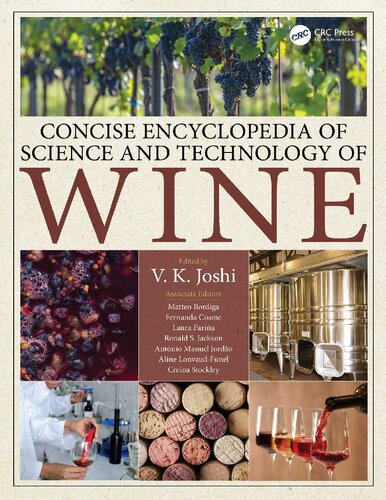

Most ebook files are in PDF format, so you can easily read them using various software such as Foxit Reader or directly on the Google Chrome browser.
Some ebook files are released by publishers in other formats such as .awz, .mobi, .epub, .fb2, etc. You may need to install specific software to read these formats on mobile/PC, such as Calibre.
Please read the tutorial at this link: https://ebookbell.com/faq
We offer FREE conversion to the popular formats you request; however, this may take some time. Therefore, right after payment, please email us, and we will try to provide the service as quickly as possible.
For some exceptional file formats or broken links (if any), please refrain from opening any disputes. Instead, email us first, and we will try to assist within a maximum of 6 hours.
EbookBell Team

4.4
92 reviewsWhen asking the question what is wine? there are various ways to answer. Wine is extolled as a food, a social lubricant, an antimicrobial and antioxidant, and a product of immense economic significance. But there is more to it than that. When did humans first start producing wine and what are its different varieties? Are wines nutritious or have any therapeutic values―do they have any role in health or are they simply intoxicating beverages? How are their qualities determined or marketed and how are these associated with tourism? Concise Encyclopedia of Science and Technology of Wine attempts to answer all these questions and more.
This book reveals state-of-the-art technology of winemaking, describing various wine regions of the world and different cultivars used in winemaking. It examines microbiology, biochemistry, and engineering in the context of wine production. The sensory qualities of wine and brandy are explored, and the composition, nutritive and therapeutic values, and toxicity are summarized. Selected references at the end of each chapter provide ample opportunity for additional study.
Key Features:
Concise Encyclopedia of Science and Technology of Wine contains the most comprehensive, yet still succinct, collection of information on the science and technology of winemaking. With 45 chapters contributed by leading experts in their fields, it is an indispensable treatise offering extensive details of the processes of winemaking. The book is an incomparable resource for oenologists, food scientists, biotechnologists, postharvest technologists, biochemists, fermentation technologists, nutritionists, chemical engineers, microbiologists, toxicologists, organic chemists, and the undergraduate and postgraduate students of these disciplines.